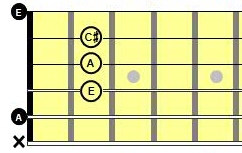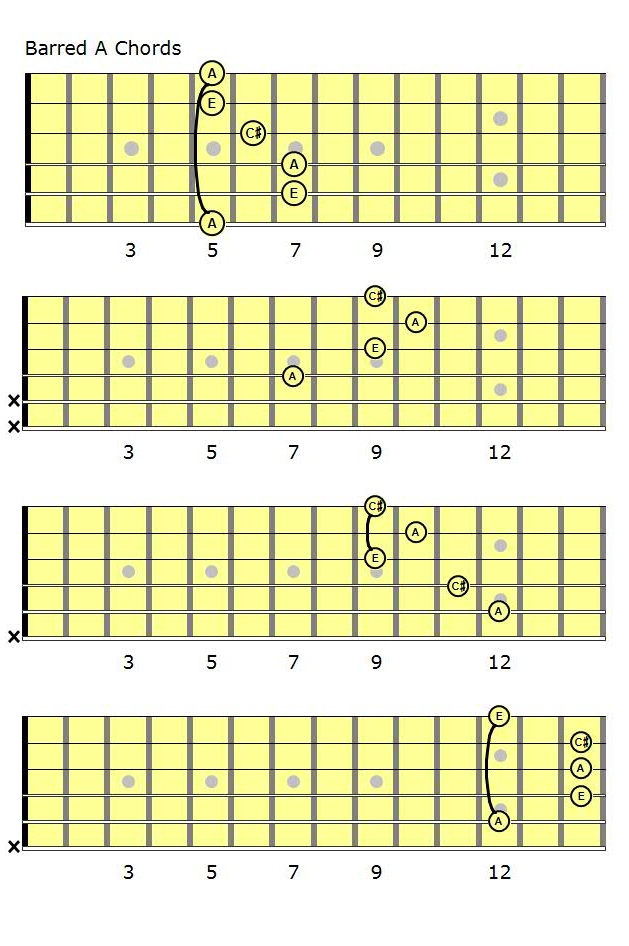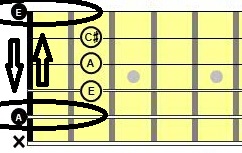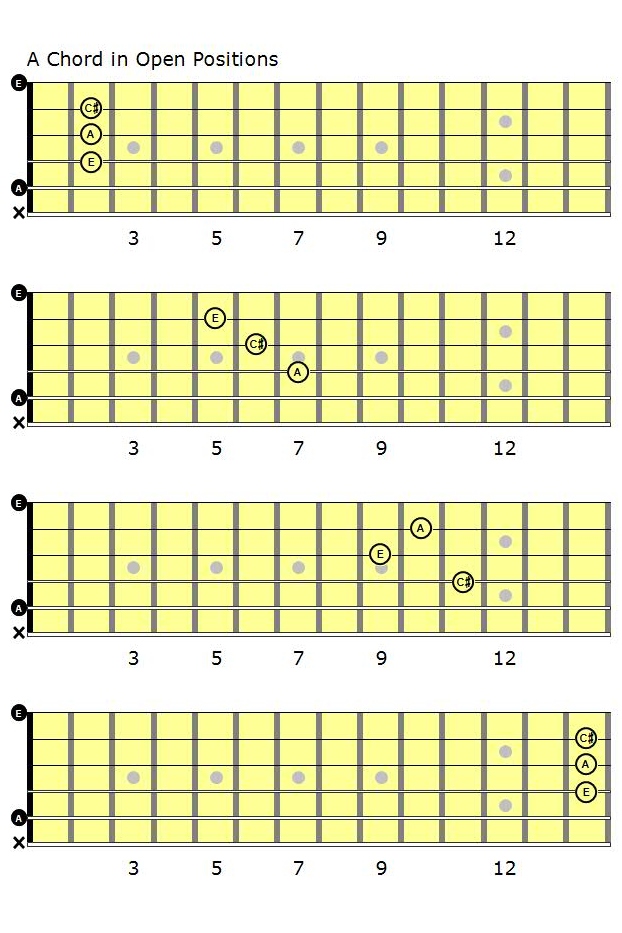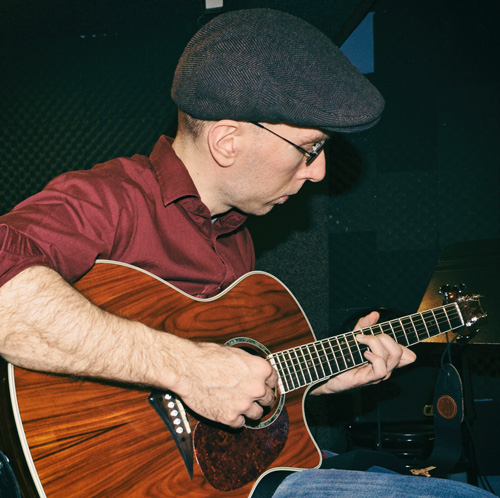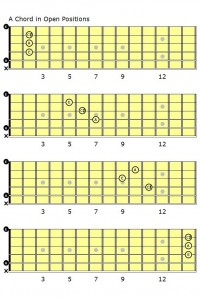 So here’s an entry for you guys who have played a while. You know your basic chords and maybe a few barre chords. Now what? The open chord concept is going to get you far in your playing and is easy on the fingers.
So here’s an entry for you guys who have played a while. You know your basic chords and maybe a few barre chords. Now what? The open chord concept is going to get you far in your playing and is easy on the fingers.
So here I’ll show you some cool open A chords and even how to find them yourself.
Here’s a couple options for you. If you just want some quick cool chords to learn, and don’t want to learn geeky theory skip to the end to the chart of open A chords. But I’d challenge you to learn the theory behind it and how to find them yourself. The theory tells us why it works. So let’s get started, shall we?
Know Thy Fretboard
To find open chords yourself, you’ll need some knowledge of notes on the fretboard. Some guitarists learn the note names, others find them by ear. For this lesson let’s study the note names on the fretboard:
If you know any theory, you’ll know about what notes are in the key of “A”. And if you don’t know the theory, that’s okay. Just as long as you know where the notes are on the fretboard.
The notes in the key of A are: A, B, C#, D, E, F#, G#, and back to A. Here’s how they look on the freboard:
Finding A Major Up The Neck
What we want are notes in the chord of A Major. Remember your stock A Major chord?
The notes you see are A, E, A, C#, and E. Some notes are repeated in higher octaves here. If we want just the note names it can be narrowed down to A, C#, and E. This is know as a triad. The note we usually start with is the base of that triad, the root. In A major, the root is “A”.
What we want to do is now find other parts of the fretboard where we can play that same chord. Much of the conventional method for playing higher up the neck involves barre chords. They’d say find the potential barre chords up the neck in the forms of C, D, E, A, and if the instructor is feeling mean…G. I’m not feeling that mean today.
I often have students learn barre chords just to learn what they are. And I’d encourage you to learn them for that reason. But if you’ve been playing them for a while, it’s time for something different. Barre chords sound great on an electric, but not so well on an acoustic. Here’s where it gets fun.
Open A Chords
For an acoustic guitar, the open chord concept works great. Open strings give you sustain and volume. And they let your fingers play elsewhere. When you have a combination of higher strings and bass and middle open strings, you get a great full sound, almost 12-string like.
When figuring out open chords you have to ask: what are the open strings you have available? Here we have “A” as the root for a bass note and the high “E” string. (For this lesson we’re not going to use the low “E” string which is muted with an X, because we want that lone “A” for the bass.)
For the fingered positions all we have to do is find the other positions for that triad while we keep the open strings and wala: Open chord positions in A.
Practice these positions for a while. Then once you know them, play around and see what new chords and sounds you find. If you find anything cool, let me know!









